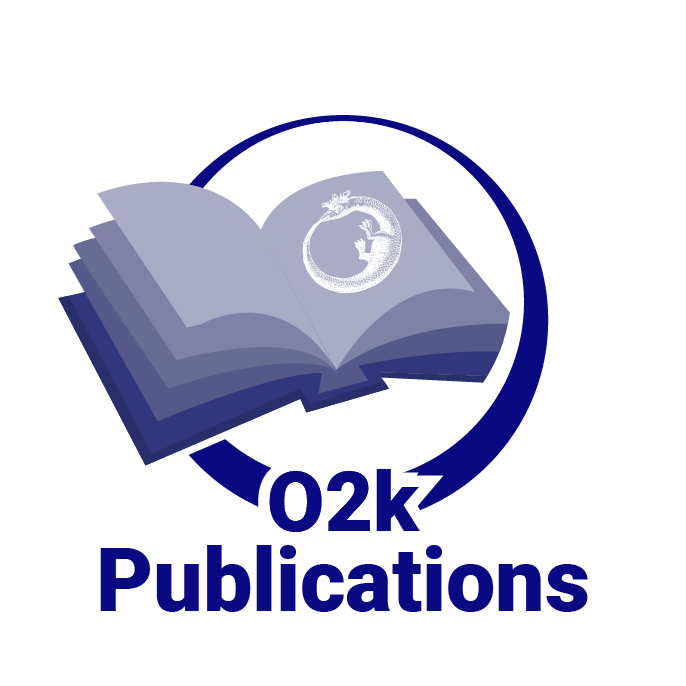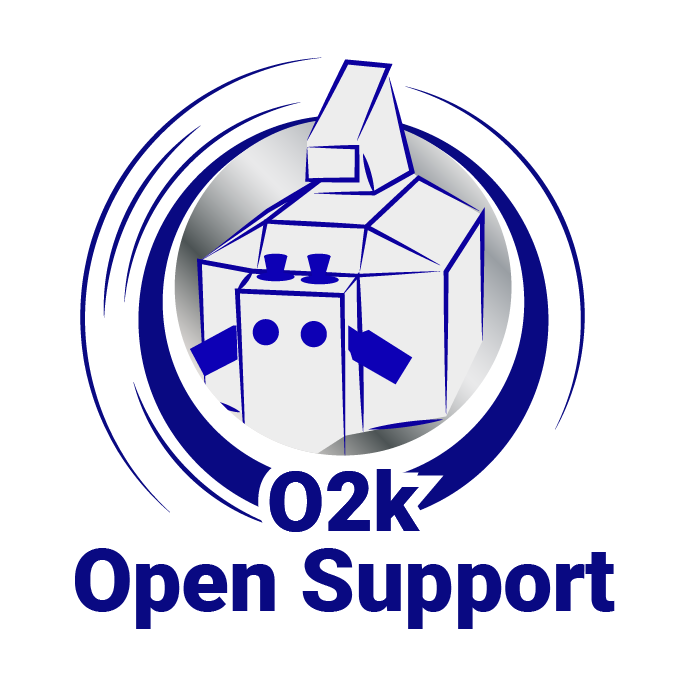Difference between revisions of "O2k Applications"
| (22 intermediate revisions by 11 users not shown) | |||
| Line 1: | Line 1: | ||
{{OROBOROS_header_page_name}} | {{OROBOROS_header_page_name}} | ||
:::: <big><big>O2k - the world's most | :::: <big><big>O2k - the world's most powerful, popular and prestigeous respirometer for mitochondria and cell research</big></big> | ||
== High- | == High-resolution: high accuracy, minimum amount of sample == | ||
{| class="wikitable" | {| class="wikitable" | ||
| Line 82: | Line 15: | ||
|Heart mitochondria | |Heart mitochondria | ||
|0.01 mg protein | |0.01 mg protein | ||
|2.0 | |2.0 mL | ||
|37 ° C | |37 ° C | ||
|- | |- | ||
|Permeabilized muscle fibers | |Permeabilized muscle fibers | ||
|1 mg wet weight | |1 mg wet weight | ||
|2.0 | |2.0 mL | ||
|37 ° C | |37 ° C | ||
|- | |- | ||
|Endothelial cells | |Endothelial cells | ||
|0.2 • 10^6 cells | |0.2 • 10^6 cells | ||
|2.0 | |2.0 mL | ||
|37 ° C | |37 ° C | ||
|- | |- | ||
|T-lymphocytes | |T-lymphocytes | ||
|1 • 10^6 cells | |1 • 10^6 cells | ||
|2.0 | |2.0 mL | ||
|37 ° C | |37 ° C | ||
|- | |- | ||
| Line 103: | Line 36: | ||
Reference: [[Pesta_2012_Methods_Mol_Biol|Pesta 2012 Methods Mol Biol]] | Reference: [[Pesta_2012_Methods_Mol_Biol|Pesta 2012 Methods Mol Biol]] | ||
==High-resolution respirometry== | |||
<big>Routine respirometric monitoring with limited activities or amounts of:</big> | |||
:::*Isolated mitochondria ([[O2k-Publications: Isolated Mitochondria|references]]) | |||
:::*[[Greenland Expedition CMRC 2004|Small needle biopsies]], permeabilized muscle fibres ([[Pesta 2012 Methods Mol Biol|reference]]) | |||
:::*Delicate cell cultures ([[O2k-Publications: Living cells|references]]) | |||
:::*Pathological samples with reduced cellular respiration ([[O2k-Publications: Cancer|apoptosis]]; [[O2k-Publications: Mitochondrial diseases and defects|mitochondrial diseases]]; [[O2k-Publications: Ischemia-reperfusion|ischemia-reperfusion injury]], [[O2k-Publications: Aging; senescence|aging]], [[O2k-Publications: RONS; Oxidative stress|oxidative stress]]) | |||
:::*Mutants with diminished respiratory capacity | |||
:::*Microbial cultures, microalgae | |||
:::*Oxygen: at the extremes of intracellular oxygen limitation ([[O2k-Publications: Oxygen kinetics|references]]) | |||
:::*Oxidases and antioxidant systems ([[O2k-Publications: Oxidases; Biochemical Oxidations|references]]) | |||
== Rapidly | == Rapidly increasing demands == | ||
Approaches to mitochondrial and cellular respirometry have been transformed and extended in mitochondrial physiology, from specialized bioenergetics to integrative and clinical applications. Meeting rapidly increasing demands, the new [[O2k | Approaches to mitochondrial and cellular respirometry have been transformed and extended in mitochondrial physiology, from specialized bioenergetics to integrative and clinical applications. Meeting rapidly increasing demands, the new [[Oroboros O2k]] covers major areas of interest: | ||
1. Routine analysis of oxidative phosphorylation (OXPHOS) in diverse fields of research such as redox signaling, oxidative stress [http://www.ncbi.nlm.nih.gov/pubmed/12499903?dopt=Abstract| 1], ischemia-reperfusion [http://www.ncbi.nlm.nih.gov/pubmed/14693685?dopt=Abstract| 2], aging [http://www.ncbi.nlm.nih.gov/pubmed/15018610?dopt=Abstract| 3], degenerative and inherited diseases [http://www.ncbi.nlm.nih.gov/pubmed/15269007?dopt=Abstract| 4]; apoptosis, cancer research and drug testing [http://www.ncbi.nlm.nih.gov/pubmed/12972300?dopt=Abstract| 5], cell signaling [http://www.ncbi.nlm.nih.gov/pubmed/16456220?dopt=Abstract| 6], and environmental stress. For the non-specialist, the O2k provides robustness and reliability of instrumental performance. Full software support by DatLab includes automatic oxygen calibration, continuous display of oxygen concentration and respiratory flux, and on-line tabulation of final results on OXPHOS activity during selected experimental sections. Standardized O2k quality controls eliminate interferences by instrumental artifacts. Long-term stability of the polarographic oxygen sensors ensures the O2k to be ready to use (no exchange of membranes and electrolyte for months). | 1. Routine analysis of oxidative phosphorylation (OXPHOS) in diverse fields of research such as redox signaling, oxidative stress [http://www.ncbi.nlm.nih.gov/pubmed/12499903?dopt=Abstract| 1], ischemia-reperfusion [http://www.ncbi.nlm.nih.gov/pubmed/14693685?dopt=Abstract| 2], aging [http://www.ncbi.nlm.nih.gov/pubmed/15018610?dopt=Abstract| 3], degenerative and inherited diseases [http://www.ncbi.nlm.nih.gov/pubmed/15269007?dopt=Abstract| 4]; apoptosis, cancer research and drug testing [http://www.ncbi.nlm.nih.gov/pubmed/12972300?dopt=Abstract| 5], cell signaling [http://www.ncbi.nlm.nih.gov/pubmed/16456220?dopt=Abstract| 6], and environmental stress. For the non-specialist, the O2k provides robustness and reliability of instrumental performance. Full software support by DatLab includes automatic oxygen calibration, continuous display of oxygen concentration and respiratory flux, and on-line tabulation of final results on OXPHOS activity during selected experimental sections. Standardized O2k quality controls eliminate interferences by instrumental artifacts. Long-term stability of the polarographic oxygen sensors ensures the O2k to be ready to use (no exchange of membranes and electrolyte for months). | ||
| Line 118: | Line 65: | ||
4. Prevalence of oxidative stress at air-level oxygen tensions demands a shift to physiological low-oxygen ranges for studying OXPHOS [www.pnas.org/cgi/content/full/97/20/11080 | 4. Prevalence of oxidative stress at air-level oxygen tensions demands a shift to physiological low-oxygen ranges for studying OXPHOS [http://www.pnas.org/cgi/content/full/97/20/11080 7], [http://www.oroboros.at/fileadmin/user_upload/Reprints/2001_Gnaiger_Resp_Physiol.pdf| 8]. | ||
5. O2k-MultiSensor applications (pH, NO, | 5. [[O2k-MultiSensor]] applications (pH, NO, H<sub>2</sub>O<sub>2</sub>; ion sensitive electrodes - TPP+ or Ca<sup>2+</sup>; fluorescence - H<sub>2</sub>O<sub>2</sub> production with Amplex UltraRed, mitochondrial membrane potential with safranin/TMRM/rhodamine 123, ATP production with Magnesium Green, Ca<sup>2+</sup> uptake or retention capacity with Calcium Green; NAD- or Q-redox state with the NextGen-O2k) and sampling from the chamber (CS enzyme assays; [[MiPNet10.08 IOC31|EPR]] spin probes for ROS) extend the diagnostic power of high-resolution respirometry. | ||
This makes the | This makes the Oroboros O2k the world-wide unique instrument for high-resolution respirometry: | ||
* Chamber design: avoiding oxygen-permeable materials such as Perspex or teflon-coated stirrers [http://www.pnas.org/content/97/20/11080.full | * Chamber design: avoiding oxygen-permeable materials such as Perspex or teflon-coated stirrers [http://www.pnas.org/content/97/20/11080.full 7] Compare: [[O2k specifications| O2k specifications]] | ||
* Instrumental concept: including integrated Peltier-temperature control, automatic Titration-Injection microPump [[Titration-Injection_microPump| TIP2k]] | * Instrumental concept: including integrated Peltier-temperature control, automatic Titration-Injection microPump [[Titration-Injection_microPump| TIP2k]] | ||
* [ | * [[DatLab|Software features of DatLab]] | ||
* Methodological standards | * Methodological standards | ||
<big><big>'''For more information, browse through the [[O2k-Publications:_Topics| O2k-Publications]]'''</big></big> | |||
Latest revision as of 15:17, 14 July 2022
O2k Applications
- O2k - the world's most powerful, popular and prestigeous respirometer for mitochondria and cell research
High-resolution: high accuracy, minimum amount of sample
| Sample | Amount | O2k-Chamber | Temp. |
|---|---|---|---|
| Heart mitochondria | 0.01 mg protein | 2.0 mL | 37 ° C |
| Permeabilized muscle fibers | 1 mg wet weight | 2.0 mL | 37 ° C |
| Endothelial cells | 0.2 • 10^6 cells | 2.0 mL | 37 ° C |
| T-lymphocytes | 1 • 10^6 cells | 2.0 mL | 37 ° C |
Reference: Pesta 2012 Methods Mol Biol
High-resolution respirometry
Routine respirometric monitoring with limited activities or amounts of:
- Isolated mitochondria (references)
- Small needle biopsies, permeabilized muscle fibres (reference)
- Delicate cell cultures (references)
- Pathological samples with reduced cellular respiration (apoptosis; mitochondrial diseases; ischemia-reperfusion injury, aging, oxidative stress)
- Mutants with diminished respiratory capacity
- Microbial cultures, microalgae
- Oxygen: at the extremes of intracellular oxygen limitation (references)
- Oxidases and antioxidant systems (references)
Rapidly increasing demands
Approaches to mitochondrial and cellular respirometry have been transformed and extended in mitochondrial physiology, from specialized bioenergetics to integrative and clinical applications. Meeting rapidly increasing demands, the new Oroboros O2k covers major areas of interest:
1. Routine analysis of oxidative phosphorylation (OXPHOS) in diverse fields of research such as redox signaling, oxidative stress 1, ischemia-reperfusion 2, aging 3, degenerative and inherited diseases 4; apoptosis, cancer research and drug testing 5, cell signaling 6, and environmental stress. For the non-specialist, the O2k provides robustness and reliability of instrumental performance. Full software support by DatLab includes automatic oxygen calibration, continuous display of oxygen concentration and respiratory flux, and on-line tabulation of final results on OXPHOS activity during selected experimental sections. Standardized O2k quality controls eliminate interferences by instrumental artifacts. Long-term stability of the polarographic oxygen sensors ensures the O2k to be ready to use (no exchange of membranes and electrolyte for months).
2. High throughput is required in research with cell cultures and pharmacological tests. The O2k has two independent chambers for parallel experimental runs. User-friendly features make it possible to apply several O2k simultaneously.
3. Diagnosis of OXPHOS in living and permeabilized cells, small amounts of tissue from transgenic animal models, and human needle biopsies requires high-resolution respirometry to obtain accurate results even at high sample dilution. <1 mg fresh muscle tissue or <500.000 cells are required per chamber (10-fold less compared to conventional instruments). Multiple substrate/inhibitor titration protocols extend the information gained on various OXPHOS complexes in a single incubation.
4. Prevalence of oxidative stress at air-level oxygen tensions demands a shift to physiological low-oxygen ranges for studying OXPHOS 7, 8.
5. O2k-MultiSensor applications (pH, NO, H2O2; ion sensitive electrodes - TPP+ or Ca2+; fluorescence - H2O2 production with Amplex UltraRed, mitochondrial membrane potential with safranin/TMRM/rhodamine 123, ATP production with Magnesium Green, Ca2+ uptake or retention capacity with Calcium Green; NAD- or Q-redox state with the NextGen-O2k) and sampling from the chamber (CS enzyme assays; EPR spin probes for ROS) extend the diagnostic power of high-resolution respirometry.
This makes the Oroboros O2k the world-wide unique instrument for high-resolution respirometry:
- Chamber design: avoiding oxygen-permeable materials such as Perspex or teflon-coated stirrers 7 Compare: O2k specifications
- Instrumental concept: including integrated Peltier-temperature control, automatic Titration-Injection microPump TIP2k
- Methodological standards
For more information, browse through the O2k-Publications




